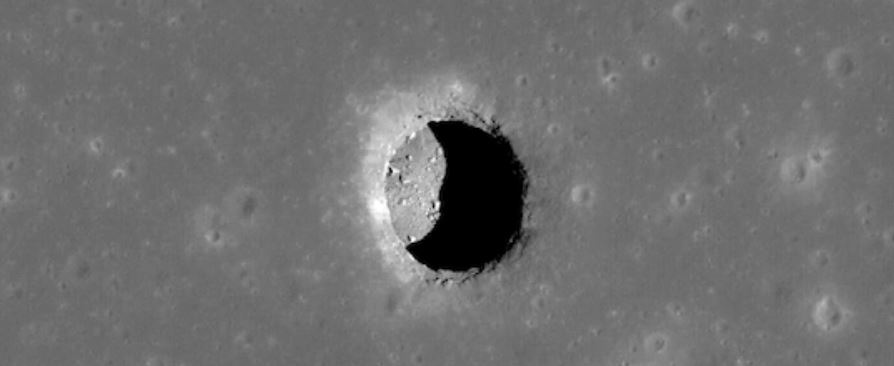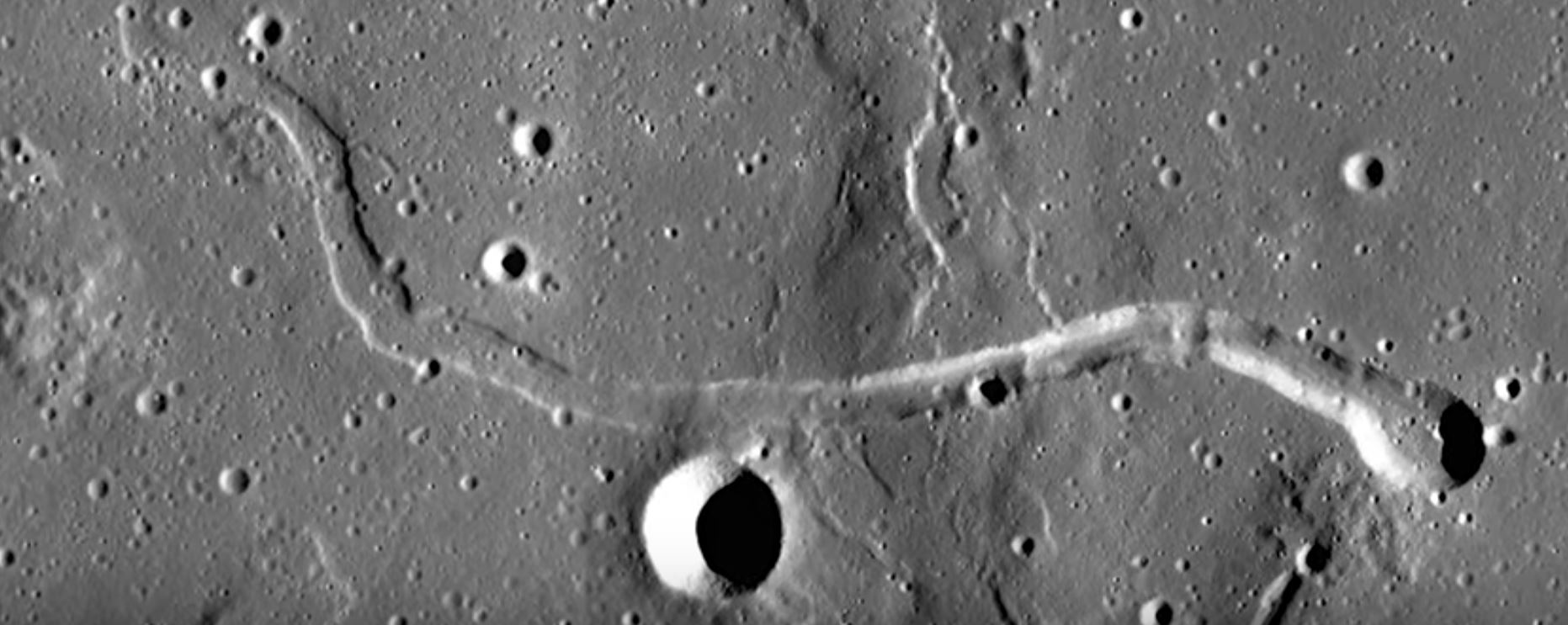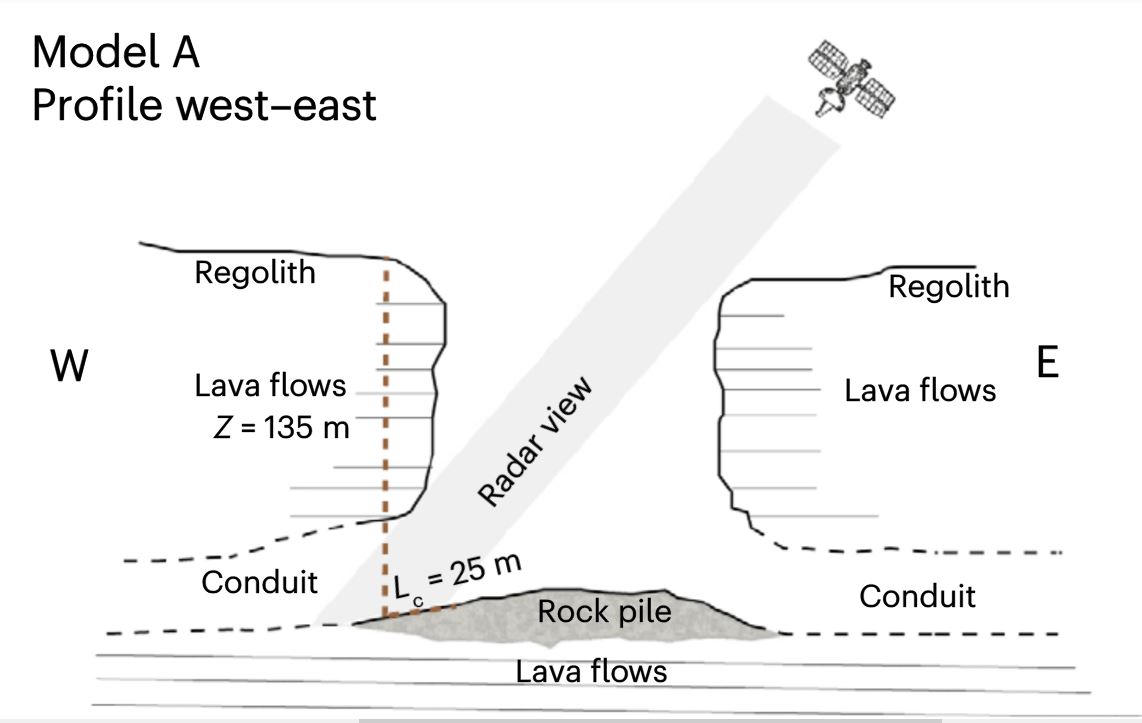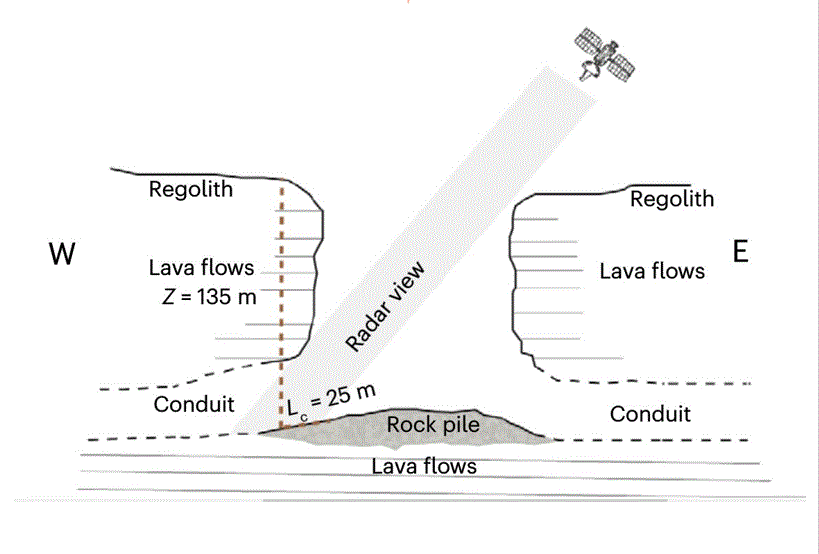

WaPo: First lunar lava cave has been found.
WaPo: First lunar lava cave has been found.
My prior post about China looking at lunar lava caves referenced an article that didn’t have any new information about lunar lava caves. This recent WaPo article announces the first direct evidence of a lunar lava cave. There are a few similar news reports all based on this Radar evidence of cave conduit science article. This science article has less fluff and more interesting information. That link may not remain active, so I will post an interesting diagram from the article.
Until now, lunar lava tubes have been expected, but not detected. The lunar surface has been accurately mapped and photographed, with many potential lava tubes. What looks like collapsed tunnels or tube openings are all over the place. Nobody has looked inside.

The photo at the top is Mare Tranquillitatis pit (MTP). The rim looks undercut, like there may be something in there. Scientists from the Italian Space Agency were able to use radar data taken 12 years ago by lunar satellites to map the area under the lip. It’s a lunar lava tube, and that is spawning the Moon base articles.
Here is a diagram to summarize the findings from the recent article.

The opening of MTP is a hole with diameter of about 100 meters. At the bottom of the 135 m deep hole, there is a rock pile. The lava tube is at least 25 m long. We won’t know how far the tube goes or where, until we take a look. We should go.
Elon Musk could work this out. Send an unmanned supply rocket to land inside the hole. As it’s landing, it could take lateral photos and radar readings. Just before touching down, it blasts it’s data back to Earth. If the interior looks promising, send a manned rocket to land on the surface.
Here’s an artist’s rendition.

One astronaut would rappel down to the supply rocket. It’s a 300 ft drop, but at one-sixth the gravity. Attach steel cables between the supply rocket and the manned rocket to be used as an expedient elevator. With the payload from two rockets, they get enough to set up a base. They need a small nuclear power plant, airtight enclosure, the supplies to grow food, and sufficient supplies to hold out for some length of time.
The intention is that they would grow food and find water. Another supply ship could be sent if necessary, but there is no plan to bring them back. Regolith would be processed to provide metal to build structures to get into and out of the pit easier.
If that lava tube seems promising, make that the base. If regolith can be processed to cast aluminum or iron, frames for heavy equipment could be fabricated. Sophisticated parts, like motors and electronics would come Earth until the capabilities are developed.
It feels unacceptable to send astronauts with no plan for their return, but that’s how exploring used to work. I’d go.